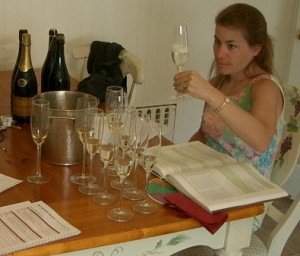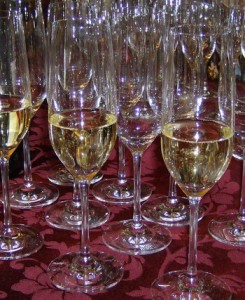 Back in February, [yellow tail] made news when it announced that it would be making a sizeable donation to the Humane Society of the United States (HSUS). Unfortunately, it wasn’t the kind of publicity they were hoping for. Instead of being seen as a charitable act, many in the agricultural community were outraged by this decision and called for people to boycott Yellow Tail. The problem was that the HSUS was not the pet-loving, animal shelter organization that Yellow Tail thought it to be. Rather, the HSUS has taken a firm stand on ending “factory farming” which is why the ranchers were so up in arms when they heard the announcement. After a contentious war waged on the social media battlegrounds, Yellow Tail backed down and withdrew the remaining balance due on its pledge, lesson learned.
Back in February, [yellow tail] made news when it announced that it would be making a sizeable donation to the Humane Society of the United States (HSUS). Unfortunately, it wasn’t the kind of publicity they were hoping for. Instead of being seen as a charitable act, many in the agricultural community were outraged by this decision and called for people to boycott Yellow Tail. The problem was that the HSUS was not the pet-loving, animal shelter organization that Yellow Tail thought it to be. Rather, the HSUS has taken a firm stand on ending “factory farming” which is why the ranchers were so up in arms when they heard the announcement. After a contentious war waged on the social media battlegrounds, Yellow Tail backed down and withdrew the remaining balance due on its pledge, lesson learned.
Beyond Yellow Tail’s specific actions, it appears that familiarity breeds contempt. Yellow Tail’s success as a top wine brand has made it a ubiquitous target for wine writers and others. Many of the articles covering the debate about Governor Patterson’s proposal to permit grocery stores in New York state to sell wine lament that such a move would result in a lowest common denominator selection of wine on the shelves, chief among them, Yellow Tail. The backlash is further emphasized in other contexts, as readers of various wine columns are admonished to drink ABY…anything but Yellow Tail… and are urged to think outside the big Australian bottle.
But, is this criticism fair? Does Yellow Tail deserve this treatment? Clearly, some consumers must like drinking Yellow Tail or it wouldn’t have grown to become the big brand it is known to be. In fact, accoring to Beverage World’s April 2010 issue, Yellow Tail ranked #2 in Top 10 U.S. Wine Brands based on U.S. dollar sales for 2009.
Obviously, a lot of people are buying Yellow Tail wines, but how does Yellow Tail do when tasted blindly against other wines? This is precisely the question posed at a recent Yellow Tail event. Last week, Doug Frost, MS, MW presided over a blind tasting in which Yellow Tail Reserve wines were tasted in blind flights with a competitive set of wines. The invitation, sent to a select audience of sommeliers and wine writers, asked invitees if they could spot which wine was the Yellow Tail wine among a photo of paperbag-wrapped bottles.
The small-scale events were held in Los Angeles, San Francisco, Chicago and New York, with John Casella, Managing Director for Yellow Tail, in attendance as well. So what happened? How did the wines fare in this context? Unfortunately, I wasn’t there to find out first hand, but early reports indicate that it may not have been the slam dunk that Yellow Tail had hoped it would be.
On May 10, Bottlenotes’ The Daily Sip hit my in-box and suggested that I, “Try This Wine at Home–If You Dare,” with the additional headline, “The scariest blind tasting ever?” Author Bayard Collins explained that he and the other participants had, “sip[ped], spit [and] cringe[d]” during the tasting and further noted that although no official score was kept, the Yellow Tail wines were the least favorites with one exception — the Mollydooker Maitre’d Cabernet Sauvignon. Bayard admitted that some of the tasters did like the Yellow Tail wines and advised that some of his readers might like it too, yet added the snide comment that liking Yellow Tail “wasn’t “a crime (that we know of).”
Another participant, Marisa D’Vari of A Wine Story, also wrote of her experience at the tasting. While Marisa wrote favorably about the event, it is what she didn’t say that is more revealing than what she did. The only reference to the actual tasting experience was her statement, “It was interesting to compare these (mostly) Australian wines in terms of style…” but she never fully states her own impressions of the wine, merely noting that, “The wines were created to be great tasting wines that went well with many foods.”
Such results are unfortunate because Yellow Tail is not, as it would seem to be painted, inherently evil. While Bayard is certainly entitled to his opinion and preferences, his snarkiness may dissuede some of his readers from enjoying Yellow Tail. For wine writers and sommeliers who have the opportunity to taste a broader range of wines and at much higher price points (generally not on our own dimes), we can be a bit jaded, but for the majority of consumers with little to no wine knowledge, Yellow Tail and other wines might be perfect. With its size and access, it can create a consistent product from year to year. Yes, many wine lovers enjoy vintage variation, but my guess is that the majority of consumers like to know what to expect when they open a bottle of wine and, if they liked the wine last time, expect that it will taste the same the next time they buy it and this is an area where Yellow Tail delivers.
I was beginning to think that the blind tasting event might have been a total misstep for Yellow Tail when I received the following e-mail from one of the participants yesterday, “Thank you very much for the kind invite…Always discoveries and surprises.” The participant still leaves a lot of things unsaid, but as this was a brief thank you note, it will be interesting to see what he or she might say further in print or online. Moreover, there were quite a few others who have as yet been silent, but that may change. The full effect of the event likely won’t be known for some time, but I applaud Yellow Tail’s efforts for making such a bold move. Misstep or not, they continue to walk forward, head held high.
NB: For the record, it should be stated that I consult for W.J. Deutsch & Sons, the company that imports Yellow Tail, on occasion, most recently working with Doug on the above event. However, the views expressed in this post are entirely my own and are not influenced by my connection with the company.



